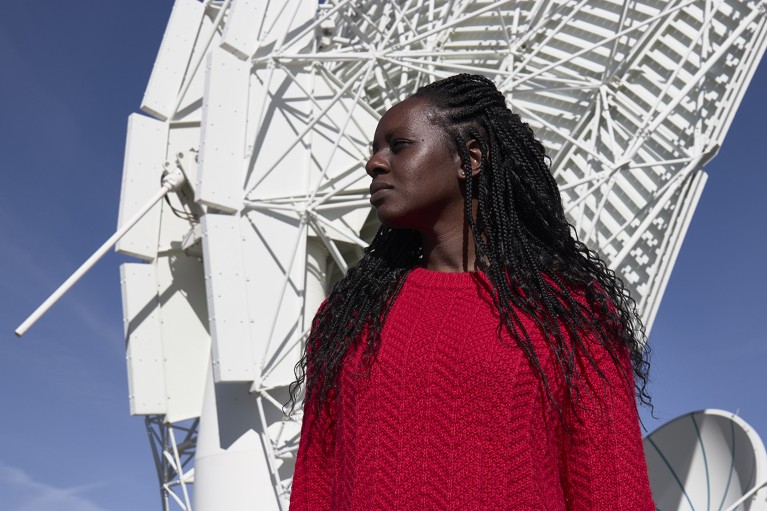In this picture, taken in July, during the Southern Hemisphere’s winter, I’m standing in front of one of the receivers of the MeerKAT radio telescope in South Africa’s central Karoo semi-desert.
MeerKAT is South Africa’s precursor to the Square Kilometre Array — a giant international radio telescope, due to be built by 2028, that my country will host together with Australia. MeerKAT’s 64 receivers produce the astronomical data that I’m analysing in my research. Its name is a play on words. ‘Meer’ means ‘more’ in Afrikaans. KAT stands for Karoo Array Telescope, which was the name of an earlier, 20-receiver design. The name also references meerkats, small mammals that live in the area.
I spend most of my days at my computer, crunching astronomical data. The photo was taken during an open day when members of the public could visit the telescope site and be shown around by astronomers.
Space has fascinated me since I was little. When I was 12, I became intrigued by the mystery of black holes. I wondered whether one day I could develop theories or make observations with powerful telescopes that would help to explain what black holes are and what happens inside them.
I’ve come some way towards fulfilling that dream. For my PhD at the Ludwig Maximilian University of Munich in Germany, I studied radio galaxies using data from the European Southern Observatory’s telescopes and instruments in Chile. Some of those telescopes were part of a collaboration that produced the first direct image of a black hole in 2019, and I felt intense pride at that. Now, I study black holes and star formation to understand how the Universe evolves.
It’s important to get the public excited about what we are discovering. As a Black South African, I’m in a minority in my field. I think that astronomers need to embrace their differences and not be blind to them or think of them as a hindrance. Once we get to that point, astrophysics will become a more welcoming and safe space for all.


 Want to promote diversity in science? Offer better support.
Want to promote diversity in science? Offer better support.





